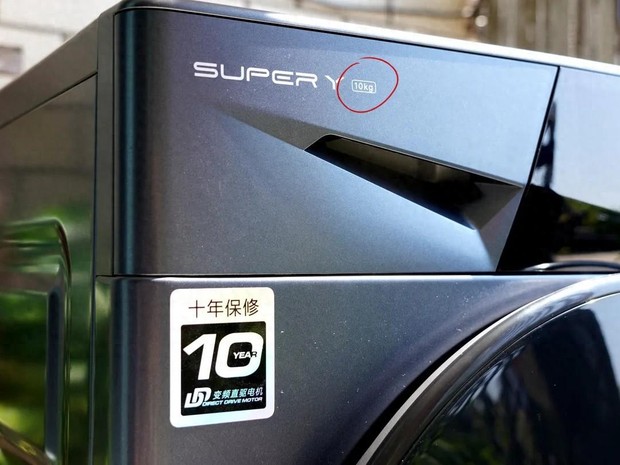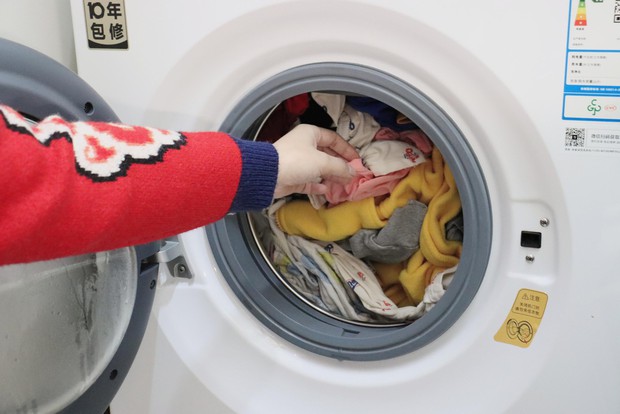We’re all familiar with “KG”, which stands for “kilograms”. While it may seem a bit strange to see “kg” written on your washing machine’s control panel, with a little bit of thought, you can probably figure it out: it refers to the weight of the clothes.
In other words, the “KG” rating of a washing machine represents how many kilograms of clothes it can wash.

So here’s the next question: does this weight refer to the weight of wet clothes or dry clothes? I’ve found that many people misunderstand this.
Dry Clothes Weight vs. Wet Clothes Weight
Apparently, this is common knowledge in the washing machine industry: KG refers to the weight of **dry clothes**.
So what happens if you overload it? Two consequences:
– It may not clean properly: Front-load washing machines need clothes to rub against each other to get clean, and top-load washing machines rely on clothes being lifted up and dropped. If the washing machine is so full that nothing can move, how can there be any rubbing or dropping?

–Overloading can damage the motor: The heavier the clothes a washing machine is designed to wash, the stronger the motor it has. Conversely, if you never wash heavy loads, the motor doesn’t have to be as strong. Unfortunately, motors are stubborn and won’t just stop when they can’t turn. Instead, they’ll keep straining, which over time increases wear and tear on the motor and can even burn it out.
So here’s the first important thing to keep in mind when using a washing machine: Don’t overload it beyond its rated capacity (i.e. its KG rating). But that’s not enough on its own.
Things to Keep in Mind When Using a Washing Machine
– Capacity
Here’s a question that often gets overlooked: When you fill the drum of a washing machine to the top, does it actually reach its rated weight capacity, or are you overloading it? The answer is not necessarily – because different fabrics have different densities.
Clothes that are denser than the test fabric (such as denim) will exceed the rated capacity when the drum is full. Clothes that are less dense than the test fabric (such as silk) will not reach the rated capacity when the drum is full.
Therefore, relying on capacity alone is not reliable when using a washing machine. To be safe, don’t fill the washing machine more than about 2/3 full (for pulsator) or 1/3 full (for drum), even if this means that it doesn’t end up using its full capacity.
– Wet Clothes
So what if your clothes are already wet (e.g. from rain or presoaking)? Is it okay to just throw them in the washing machine? Many people assume that “as long as the dry weight doesn’t exceed the capacity, it doesn’t matter if they’re wet”. This is not true.
Adding too much water not only wastes water, but it can also cause the clothes to float on top of the water. If the clothes can’t rub against each other, the washing performance will be greatly reduced.
Therefore, whenever you put wet clothes in a washing machine, make sure to turn off the auto-weigh function first and manually select a lower water level.

– Washer-Dryers
There are also washing machines that have a “dryer” function, meaning that they are essentially a washer and dryer all in one. You should also be careful when using these, because their rated capacity usually refers to the washing capacity – e.g. a 10kg washer-dryer can wash 10kg of clothes.
However, the drying capacity of a washer-dryer is typically only about 2/3 of the washing capacity. A 10kg washer-dryer can typically only dry about 6kg or 7kg of clothes.
Keep this in mind when using a washer-dryer. If you overload it, you may need to remove some of the clothes before starting the drying cycle.
If you put too many clothes in, the drying process will be slow, and the clothes may come out wrinkled or even still damp. Of course, there are also many washer-dryers that have two separate “KG” ratings, one for washing and one for drying, to make it clearer for users.































